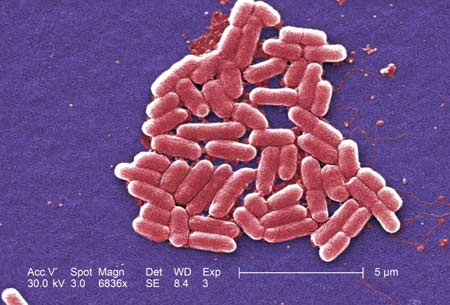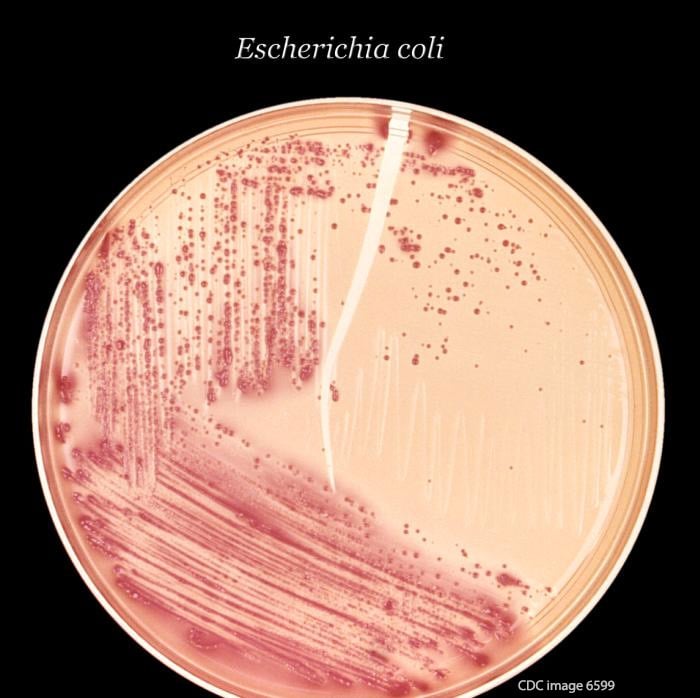If your child has been diagnosed with E. coli O157:H7, it is important to contact an E. coli lawyer and then, with your lawyer’s guidance, do the following:
- Contact your local and state health departments to report the diagnosis, if your doctor has not already done so.
- Make a list of everything your child has eaten and where he or she has been in the 10 days before he or she got sick.
- Share your list with your local and state health department.
These steps are an important part of finding out what made your child sick. Finding the source of the illness is important both to prevent other children from getting sick and to hold any corporate wrongdoers (sellers of tainted food) accountable.
Do not throw away food you suspect made your child sick until you talk with your lawyer.
To contact our national E. coli lawyers, use the form below.
What is E. coli O157:H7?
E. coli O157:H7 is bacteria that can cause an infection in a child’s colon. The bacteria adhere to the intestinal epithelial cells and then colonize (multiply). This causes an acute inflammatory response and destruction of mucous membranes in the lining of the colon. This produces diarrhea with a lot of blood and sheets of mucous containing cells (due to the damage in the colon). Some children with an E. coli infection develop Hemolytic Uremic Syndrome (HUS), a severe complication of the infection that causes kidney (renal) disease, and very often kidney failure. We discuss that later in this article.

The combination of letters and numbers in the name of the bacterium, O157:H7, is the serotype of the genus Escherichia and species Escherichia coli (E. coli). The numbers and letters refer to the specific chemical markers found on the surface. E. coli with other serotypes can also cause illness, including: O111, O26, O45, O103, O121, and O145.
Food, Water or Animal Contact Gave Your Child E. coli
E. coli O157:H7 infections are caused by contaminated food or water or by contact with an animal that has the bacteria in its feces. E. coli can be transmitted from person to person, but the initial source for these cases is usually contaminated food, water, or an animal. Some foods that have caused E. coli outbreaks include sprouts, ground beef, mechanically tenderized steak, lettuce, spinach, apples, raw milk, cheese made from raw milk, frozen pizza, and cookie dough.
In most cases, the source of the illness is never found. This is particularly true when there is only one case or a small cluster of cases. However, genetic testing on E. coli isolates found in your child’s stool sample may be the to key finding the source of your child’s illness.
One of the most widely used processes for genetic identification of E. coli is pulsed-field gel electrophoresis (PFGE). The process involves shredding the DNA and then pulsing the shreds in a gel until they separate into distinct groups that produces a pattern. People sickened by matching PFGE patterns are part of the same outbreak, and food, water, or animal feces with the same PFGE pattern is “smoking gun” evidence of the source of the outbreak. A newer technology for finding DNA patterns is whole genome sequencing (WGS). This testing finds detailed genetic information that can pinpoint the geographic origin of an E. coli bacteria isolate.

- food processor (e.g., Cargill, Tyson, Dole);
- restaurant (e.g., Olive Garden, Chipotle, Applebee’s, McDonalds, Chili’s, Jimmy John’s, Subway);
- grocery store (e.g., Kroger, Schnucks, Safeway, Trader Joe’s, Whole Foods Market, Cub);
- big-box retailers (e.g., Walmart, Sam’s Club, Costco, or Target);
- distributor; and/or
- grower.
What is Hemolytic Uremic Syndrome?
Hemolytic Uremic Syndrome (HUS) develops when Escherichia coli (E. coli) bacteria lodged in the digestive tract make toxins that enter the bloodstream and start to destroy cells, especially red blood cells. The tiny filter units in the kidneys are known as glomeruli. These become clogged with platelets and damaged red blood cells. This leads to problems with the kidney’s ability to filter and eliminate waste products.
Future Kidney Disease and Wrongful Death
- Death from end stage renal disease occurs in 12% of children with E. coli-associated HUS.
- Child survivors are at risk for future kidney disease and the need for a transplant.
- Children who had major neurological symptoms (stroke, coma, brain infection) are at risk for continuing neurological problems.
- Children are at risk for long-term gastrointestinal complications, including insulin dependent diabetes.
- The annual cost of dialysis at a rate of three times per week is in excess of $21,000.
Will Your Child Need a Kidney Transplant?
Children who develop HUS from an E. coli O157:H7 infection may need a kidney transplant at some point in their lives. A lawsuit against corporate wrongdoers should seek money to pay for future medical costs.
Below are 5 things you should know about this risk:
- A kidney transplant typically lasts 15 years;
- Young patient is likely to require 3 to 4 additional transplants over the course of life;
- Typical cost of a transplant, including surgical costs and hospital stay, is in excess of $100,000;
- Typical donor is a parent;
- In addition, immunosuppressive therapy typically involves 2-3 drugs with annual cost of approximately $17,000.
